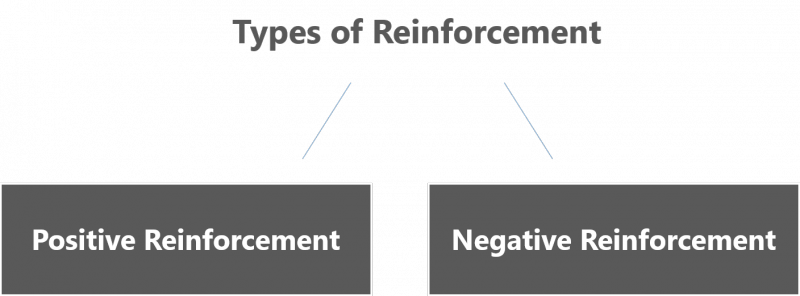Overview of Reinforcement
After reviewing this overview section, you should be able to answer the following questions about this practice:
What is Reinforcement?
Why use Reinforcement?
Where Can You Use Reinforcement?
What is the Evidence-base for Reinforcement?
What is Reinforcement?
![]()
- an evidence-based practice used to teach target skills and increase desired behavior.
- a foundational practice underpinning most other evidence-based practices (e.g., prompting, pivotal response training, activity systems) for toddlers with autism spectrum disorder (ASD).
- the relationship between the toddler’s behavior or use of a skill and the consequence of that skill or behavior. The relationship between behavior or use of skill and consequence is only reinforcing if that consequence increases the likelihood that the toddler performs the skill or behavior. An example would be a toddler being taught to request objects such as toys will only request if the toy is one that he desires.
There are two types of reinforcement:
Positive Reinforcement
Negative Reinforcement

Positive reinforcement (giving something the toddler wants) is the delivery of a reinforcer (primary such as food and comfort or secondary such as verbal praise, toys, or preferred activities) after the toddler does the target skill or behavior.

Negative reinforcement (taking away something the toddler doesn’t want) is the removal of an object or activity that the toddler does not like (e.g., staying at the table at dinner) when the toddler does the identified behavior or skill.
Why Use Reinforcement?
![]()
Reinforcement is an effective, foundational evidence based practice for teaching toddlers skills and increasing desirable behaviors. Effective implementation of reinforcement may also reduce challenging behaviors. As a toddler finds a positive behavior reinforcing he may decrease his use of the converse behavior.
For example, if the toddler is reinforced for saying “help” by receiving help and positive attention he is likely to decrease the screaming that brought him help in the past.
Reinforcement is a component of most other evidence-based practices. It is an essential practice because it directly connects the skill or behavior with a desirable consequence for the toddler, thus better ensuring success for the toddler. While skill acquisition may be intrinsically reinforcing to many toddlers, some toddlers who have autism spectrum disorder benefit from pairing the natural consequences of the skill or behavior with additional reinforcers. These additional reinforcers are faded over time to promote generalization and maintenances of the skill or behavior.
Reinforcement is most effective when it is individualized for the learner.
Where Can Reinforcement Be Used and By Whom?
![]()
Reinforcement can be used in any setting to support toddlers with ASD. Any parent, family member, early interventionist, child care provider, or other team member can utilize reinforcement. More than likely, these people are already reinforcing the toddler. This module describes how reinforcement should be implemented to maximize the toddler’s success by individualizing its application.
Reinforcement should be utilized throughout daily routines and activities. In particular, effective implementation of reinforcement is critical during routines and activities that are problematic for the toddler.
What is the Evidence-base for Reinforcement?
![]()
The National Professional Development Center on Autism Spectrum Disorders (NPDC) initially reviewed the research literature on evidence-based, focused intervention practices in 2008. A second, more comprehensive review was completed by NPDC in 2013.
- A total of 27 EBPs are identified in the current review.
- Of the 27 practices, 10 practices that met criteria had participants in the infant and toddler age group, thus showing effectiveness of the practice with infants and toddlers with ASD.
The practices were identified as evidence-based when at least two high quality group design studies, five single case design, or a combination of one group design and three single case designed studies showed that the practice was effective. The full report is available on the NPDC on ASD website.
Reinforcement meets the evidence-based practice criteria in all age groups (birth to 21) with 43 single case design studies. For the infant and toddler age group (0 - 2), 2 single-subject design studies included toddlers with autism and demonstrated positive outcomes. In addition, 14 studies included preschool children (3 - 5). Reinforcement can be used effectively to address social, communication, behavior, joint attention, play, school readiness, motor, adaptive, and, for older learners, academic and vocational skills. A complete list of the evidence base for children aged birth to five is included in the References.
Refer to the Reinforcement Fact Sheet from the updated EBP report for further information on the literature for prompting procedures.
Knowledge Check

Question:
Why is reinforcement a particularly important evidence-based practice (EBP) to understand?
Question:
What may be the reason when a reinforcer doesn’t seem to be effecting the toddler’s behavior?

